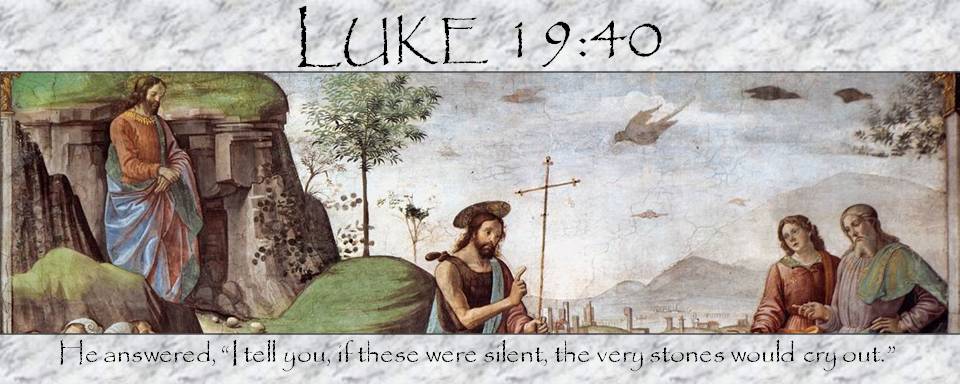As I began studying and practicing many of the traditions of
the Church over the past few years, it came to my surprise that not only does the
Latin Rite of the Catholic Church have two liturgical calendars, but one
calendar is superior to the other.
What Liturgical Year
is it?
After the Second
Vatican Council an effort was made to modify the liturgical calendar in order
to introduce more scripture into the Mass. The Mass up to that point consisted
of a one year cycle of readings with a reading from an epistle and the gospel
along with John 1:1-14 at the end of every Mass. Introduced in 1969, the new
calendar consisted of a three year cycle of readings for Sundays and a two year
cycle of readings for weekdays. Adding more scripture reading to the Mass is a
noble cause and this is not why I consider the old calendar of the Traditional
Latin Mass to be superior to the Ordinary Form of the Mass, but I do think it
is a bit confusing. I am willing to bet that most people are not aware of what liturgical
year it is. For those that are curious, we are currently in Year B1 (I had to
look it up).
Where did all the
Seasons go?
 While I see the benefit of modifying the liturgical calendar
to include more scripture readings, I do not understand the need to modify the seasons
within the liturgical year. Within the Ordinary Form calendar there are six (or
seven) liturgical seasons: Advent, Christmas, Ordinary Time, Lent, Triduum,
Easter, and Ordinary Time again. Within the Extraordinary Form calendar there
are eight liturgical seasons: Advent, Christmas, Time after Epiphany,
Septuagesima, Lent, Triduum, Easter, and Time after Pentecost. On the surface level
the only changes seem to be the removal of Septuagesima and the changing the
names of Time after Epiphany and Time after Pentecost to Ordinary time.
While I see the benefit of modifying the liturgical calendar
to include more scripture readings, I do not understand the need to modify the seasons
within the liturgical year. Within the Ordinary Form calendar there are six (or
seven) liturgical seasons: Advent, Christmas, Ordinary Time, Lent, Triduum,
Easter, and Ordinary Time again. Within the Extraordinary Form calendar there
are eight liturgical seasons: Advent, Christmas, Time after Epiphany,
Septuagesima, Lent, Triduum, Easter, and Time after Pentecost. On the surface level
the only changes seem to be the removal of Septuagesima and the changing the
names of Time after Epiphany and Time after Pentecost to Ordinary time.
Even at this surface
level both of these changes negatively affect the liturgical calendar. Septuagesima
(or pre-Lent) is a penitential time that starts about seventy days before
Easter. These three weeks before the start of Lent are meant to prepare us to
enter more deeply into the season of Lent. There seems to be no good reason to
remove the season of Septuagesima from the liturgical calendar. With regards to
the name change to Ordinary Time, Ordinary Time makes the seasons after
Christmas and Easter seem like they are mundane and ordinary. The problem is that there is no ordinary time after
the Incarnation! Every moment of the life of Christ presented to us within the
liturgical year is anything but ordinary! Having these seasons named Time after
Epiphany and Time after Pentecost give these seasons a point of reference and
reflection. The names of these two seasons allow us to recall back to the
mysteries of the Epiphany and Pentecost and continue to reflect on them
throughout the year.
Besides the name changes and removal of a season, the
seasons themselves have lost some of the richness that they have within the old
calendar. The season of Christmas for example has been reduced from forty days (ending
on the Feast of Presentation of the Lord on February 2nd) to twelve days
(ending on the Feast of the Epiphany on January 6th) and the Octave of
Pentecost is no longer celebrated. Moreover Ember days and Rogation days have been completely removed!
What does the Second
Vatican Council Say?
As I read the Second Vatican Council's Constitution of the
Sacred Liturgy in preparation for this blog post, could not find anything
within the document that would lend itself to justify such drastic changes to
the liturgical calendar. Moreover I found the document stating that the
traditional customs and discipline of the sacred seasons were meant to be
preserved or restored! I do not see how the removal and reduction of seasons
preserves or restores the traditional customs and discipline of the sacred
seasons. For those reasons I consider the calendar for the Extraordinary Form
of the Mass to be superior to the calendar for the Ordinary Form of the Mass.
The
liturgical year is to be revised so that the traditional customs and discipline
of the sacred seasons shall be preserved or restored to suit the conditions of
modern times; their specific character is to be retained, so that they duly
nourish the piety of the faithful who celebrate the mysteries of Christian
redemption, and above all the paschal mystery. If certain adaptations are
considered necessary on account of local conditions, they are to be made in
accordance with the provisions of Art. 39 and 40. (Sacrosanctum Concilium
107)




